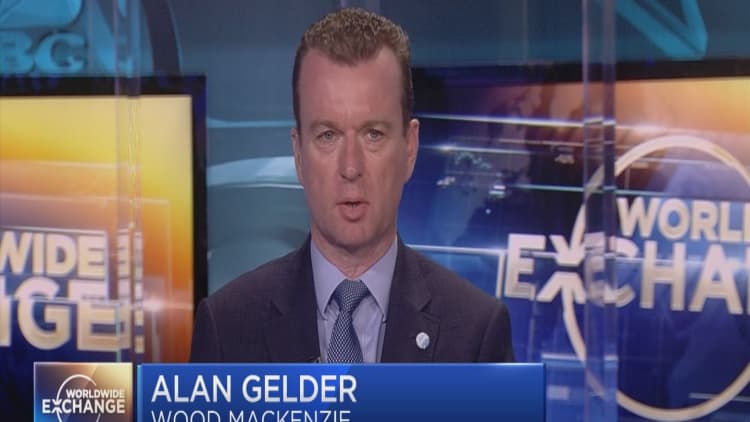Iran's crude export numbers are falling much faster than many analysts anticipated ahead of planned U.S. sanctions on the country's oil sector on November 4. Still, we don't have an oil price problem today, if Goldman Sachs' global head of commodities is to be believed — but we may have one tomorrow.
As OPEC's third largest oil producer sees its customers shrink away for fear of U.S. penalties, some market watchers predict oil surpassing $100 a barrel. Late September saw Brent crude break $80 a barrel, its highest level since 2014. The benchmark commodity is up 26.6 percent year-to-date, while WTI crude is up 24 percent in the same time period.
Jeff Currie, global head of commodities for Goldman Sachs, is less bullish about oil prices for now. Speaking to CNBC's Street Signs Europe on Tuesday, he expressed skepticism about the triple-digit forecasts.
"It's definitely not our base case. I'm not saying it cannot happen, but it would require a sustainable outage in Iranian exports going down to zero plus another disruption someplace like Venezuela," he said. "The way we're seeing it is long dated oil prices are rising, the front-end is weakening which is telling you that hey, we don't have a problem today, we potentially have a problem tomorrow."
Data from this week showed Iran exported 1.1 million barrels per day (bpd) in first week of October — down from 1.6 million in September and a far cry from its high of 2.6 million bpd in April of this year. That was one month before President Donald Trump announced U.S. withdrawal from the Iran nuclear deal, which lifted economic sanctions on Iran in exchange for curbs on its nuclear program.

But giving an accurate call for oil prices once the sanctions officially come down is impossible at this point, Currie stressed, particularly because we don't yet know how many barrels will ultimately vanish from the market.
"I think what we're seeing here is a mismatch between financial flows and the physical fundamental flows, in the sense that the market is trying to price in a very unknown problem in the form of Iran. We don't know how big the hole is."
He added that while Iran's exports are dropping fast, inventories elsewhere are building and production from OPEC and non-OPEC members (OPEC Plus) is rising "much faster than what most analysts anticipated." Numbers from September revealed that OPEC Plus production grew 32,000 bpd faster than the decline in Iran.
"So today we don't have a problem. I'm not saying we don't know if we have a problem tomorrow, but what the market is trying to do is price that problem tomorrow," Currie said.
Three points to watch ahead of November 4
The commodities expert then outlined three key developments to keep an eye on in the weeks leading up to November 4. One is the issue of waivers, which some major oil-importing countries, like those in east Asia, will request from the Trump administration.
India's government over the weekend announced they would not comply with U.S. demands to bring Iranian crude imports to zero, implying they expect to get a waiver. Their year-on-year imports from Iran have actually been increasing, due in part to massive discounts being offered by Tehran.
Market watchers should also look out for an increase in shipping around the world to deliver more oil — and we're beginning to see signs of that, according to Goldman Sachs.
Finally, to get prices down, "We want to see producer hedging on the back end of that oil curve," Currie advised. "We're also beginning to see a little bit of that. Those are the three things we're watching."


